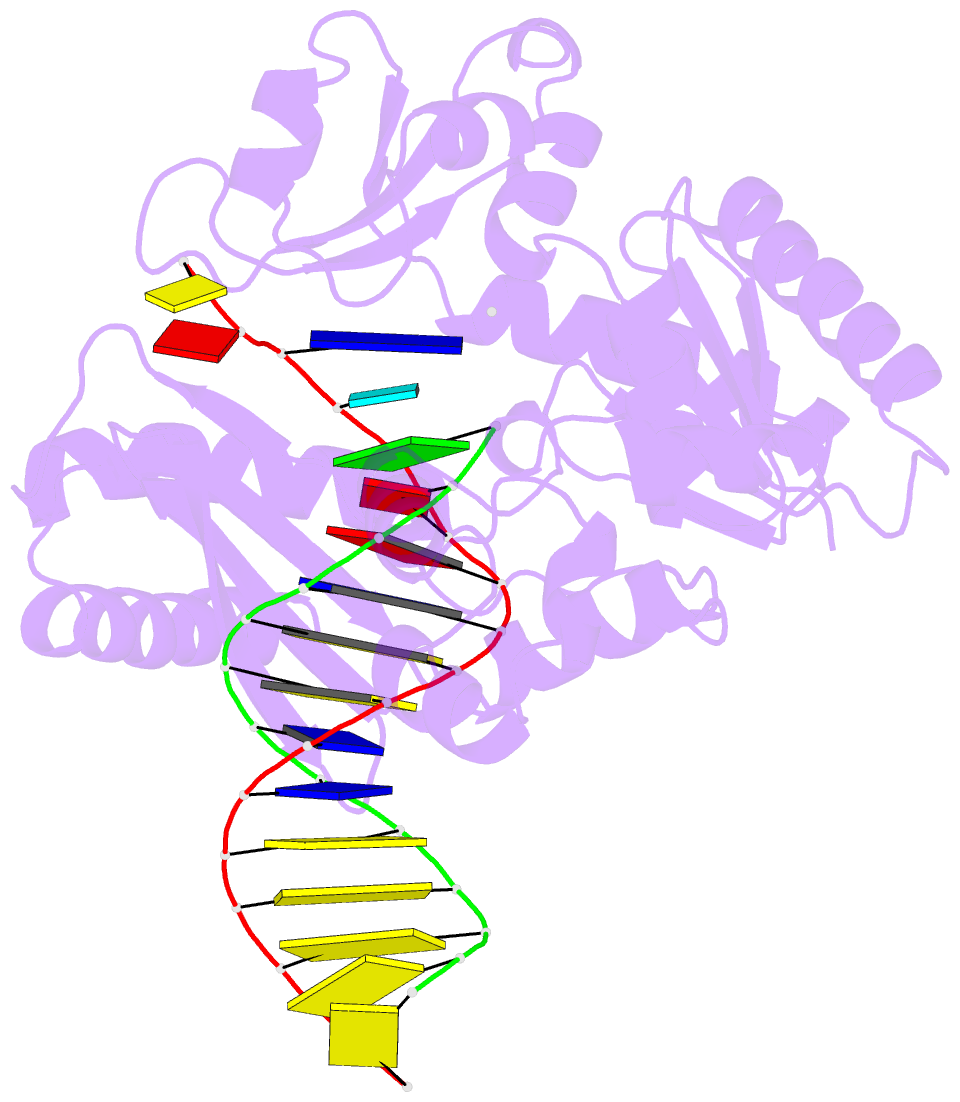Summary information and primary citation
- PDB-id
- 4rua; DSSR-derived features in text and JSON formats
- Class
- transferase-DNA
- Method
- X-ray (3.07 Å)
- Summary
- Crystal structure of y-family DNA polymerase dpo4 bypassing a mefapy-dg adduct
- Reference
- Patra A, Banerjee S, Johnson Salyard TL, Malik CK, Christov PP, Rizzo CJ, Stone MP, Egli M (2015): "Structural Basis for Error-Free Bypass of the 5-N-Methylformamidopyrimidine-dG Lesion by Human DNA Polymerase eta and Sulfolobus solfataricus P2 Polymerase IV." J.Am.Chem.Soc., 137, 7011-7014. doi: 10.1021/jacs.5b02701.
- Abstract
- N(6)-(2-Deoxy-d-erythro-pentofuranosyl)-2,6-diamino-3,4-dihydro-4-oxo-5-N-methylformamidopyrimidine (MeFapy-dG) arises from N7-methylation of deoxyguanosine followed by imidazole ring opening. The lesion has been reported to persist in animal tissues. Previous in vitro replication bypass investigations of the MeFapy-dG adduct revealed predominant insertion of C opposite the lesion, dependent on the identity of the DNA polymerase (Pol) and the local sequence context. Here we report crystal structures of ternary Pol·DNA·dNTP complexes between MeFapy-dG-adducted DNA template:primer duplexes and the Y-family polymerases human Pol η and P2 Pol IV (Dpo4) from Sulfolobus solfataricus. The structures of the hPol η and Dpo4 complexes at the insertion and extension stages, respectively, are representative of error-free replication, with MeFapy-dG in the anti conformation and forming Watson-Crick pairs with dCTP or dC.





